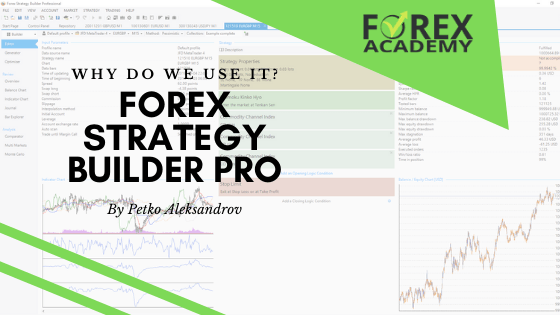In this lecture, I will talk about money management and leverage. I will try to make it very clear to the beginner traders why leverage is important when you are opening your first trading account, no matter if is a Demo Account or a Live Account. Doesn’t matter. You need to have a few things in mind.
The connection between leverage and your planned investment
So the 1st question is how much are you planning to trade with?

For example, if you are planning to put on the market $1000 or $10 000, it is very recommendable that you open a Demo Account with the same amount you are planning to use for your real trading. This way you will have a realistic idea of how much you can gain, how much is the risk, how much you can afford to trade with.
Keep in mind that opening an account with a particular amount of money doesn’t mean you’re risking it all. For example, if you open an account with $10 000, it doesn’t mean you are risking all of this $10 000 because there is leverage.

The leverage is the borrowed capital from the broker that amplifies the potential return.
If you are in Europe and your broker is regulated, most probably it will be under the ESMA regulations that restricted the brokers and providing higher leverage since 2018 I think.

What bigger leverage means
So for the cryptocurrencies, we have here in Europe just 2:1 leverage. This means that if I have an account of $10 000, I can open trades with a maximum of $20 000. Or in other words, I will be borrowing another $10 000 from the broker. And if I have leverage of 10:1, this means that I would be able to trade with $100 000.
But for cryptocurrencies, the leverage is just 2:1 in Europe. And if you are outside of Europe, then it will be easier for you to find brokers that allow higher leverage for cryptocurrencies.
But still, you need to be very careful when using leverage because it might amplify the potential returns. But at the same time, it amplifies the potential losses as well.
So having bigger leverage allows you to buy more from what you have in the account and to profit more. But at the same time, there is the risk that you will be losing more.
Let’s say that we have an account of $10 000, as I have shown in the Top 5 Strategies for Cryptocurrency Algorithmic Trading course, and the leverage is 2:1. The Bitcoin price is at $10 000 and the Ethereum price is at $400.

Now, if I have an account with $10 000 and leverage 2:1, this means that I can borrow from the broker, another $10 000 and I can buy assets totally for $20 000. So that would allow me to buy 2 Bitcoins or 2 lots of Bitcoins. Or that would allow me to buy 50 Ethereums. Or I can buy 1 Bitcoin for $10 000. And for the rest $10 000 I can Buy another 25 lots of Ethereum.
Ask price and Bid price
So having $10 000 in the account and having the leverage 2:1 will simply allow me to buy assets for $20 000 of value. And as I explained in the Top 5 Crypto Trading Strategies course initially, I started with $5 000. This is because I’m still not used to the ESMA restrictions. Or at least I don’t want to accept them, I don’t know why. But I was so used to trade with bigger leverage like 100:1.
I didn’t have basically any limitations and I was able to buy more from what I have in the account. Of course, having good money management is very important. However, now in Europe, these are the rules and we have to follow them, of course.
What is the risk?
So let me tell you what actually is the risk in the account.

And if you have $10 000 in the account and you buy Bitcoin for $20 000 or any other assets for $20 000, it doesn’t really mean that you are risking your amount of money and you’re risking $20 000.
You are risking the amount that you will lose if your Stop Loss hits. So if your Stop Loss is at $120 and you have bought 1 Bitcoin, this will produce a Loss of $120 plus the spread.
Because as we said, we buy on the Ask price and we sell on the Bid price. Or if you buy 0.4 lots Bitcoin and you have a Stop Loss of $120 and your Stop Loss is hit, this will generate a loss.
You will have $48 plus the spread, which is 40% of the $120. And if the spread is $10 like with Pepperstone you will have another $4. So your total Loss will be $52.
If it’s not clear to you, of course, don’t hesitate to ask me. I just wanted to make it clear for you in this lecture that the risk that you are taking is the amount you are going to lose if your Stop Loss hits.
Whenever you have a position with a Stop Loss, you can put your mouse on the Stop Loss line and you will see how much the Loss is. Same with the Take Profit. If you put the mouse on it, you will see how much the Take Profit is.

To make something very clear for the beginner traders, when we use leverage and we borrow money from the broker, it’s not a loan that we are taking from the broker. We are not going to give it back with an interest rate or something like that.
The leverage is like an extra amount of money that the broker allows you to use so you can buy a bigger volume or more assets.
But of course, it’s not recommendable to risk more than 2-5 % from your account.
So one more time I said that the actual risk is the Stop Loss. So if you have an account with $10 000 and you have bought 1 Bitcoin, but your Stop Loss is $120, obviously, you’re going to lose $120 if your Stop Loss is hit. This will be 1.2% from your account. And that is normal money management, a normal risk that you are taking as a trader.
Practice on a Demo account
So I would suggest you not taking a risk of more than 5% from your account at any moment. It doesn’t matter how many positions you have. Whether you have a $10 000 account, no matter what assets you buy, the sum of all your Stop Losses should not be more than $500. This is 5% from a $10 000 account.
So this is about the size of the account, the leverage, the risk, and the Stop Loss. And you should be aware of them before risking real money.
But as I always suggest, start with a Demo Account and you will see how everything works.
Thank you for reading and I will see you in next lecture.



